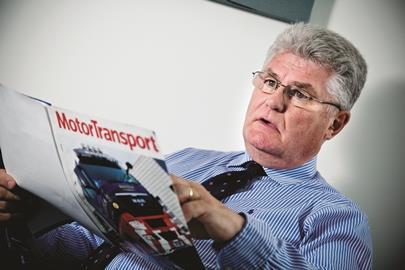Amongst all the discussions regarding which technology will provide the best method of achieving net zero carbon emissions the topic of funding and future residual values remains somewhat in the background.

The used trucks sales and marketing function has always been an area of the business that requires a deep understanding of the customer base, an ability to monitor volumes and trends together with knowledge of the reliability and service support levels for competing brands.
Glasses Guide and the CAPBook have provided a future valuation service that has been used by vehicle manufacturers, finance houses and asset management companies to help in the calculation of future residual values BUT the early stages of the development of electric vehicles are now providing the industry with a very different view of the future.
There are too few electric HGV units operating in the market place to form a view of where future values will trend but it may be appropriate to check out the current experience of used values for the electric van sector.
Tim Cattlin is a recognised analyst of used values in the LCV sector and his views are worth noting:
“The traditional RV forecast guides have been caught out – and to be fair so has almost everyone in the LCV industry. Initial forecasts were always going to be a challenge as we entered unknown territory, and everyone concerned exercised caution. Unfortunately, in hindsight, with not enough as used electric van values are currently extremely weak with the trade suggesting that ‘no one wants to know’ and so not bidding on those entering the remarketing arena.
“Why? The man in the street doesn’t see how an EV will work for them, citing all the usual issues such as range, payload, poor performance in winter, public charging infrastructure, difficulties in installing a home charger etc. He would rather stick with the tried and trusted diesel.
“So where do we go from here? With 10% of all van registrations having to be electric in 2024 (and more going forward) under the ZEV mandate to avoid manufacturers being fined, supply will increase onto an already extremely weak market. The only way RVs can increase is for there to be a palpable shift in sentiment towards EVs, this being created by a number of possibilities. These include a clear improvement in charging facilities, battery technology improvements meaning vehicles having more range between charges, punitive taxes and charges for operating a diesel van such as the introduction of zero emission zones, and eventually the lack of clean, retailable used diesel vans on the market making prices unreachable for the majority, forcing them to look at buying an EV for the first time.
“I see little change in RVs being achieved over the next two or three years – more vans will be coming up for resale, but this oversupply being tempered a little by a subtle change of mindset by the operator, and some cautious purchasing by the trade when they see an irresistible price point. After then, I see the other factors mentioned starting to have an influence, with RV’s starting to rise – but not dramatically.”
Caution is therefore the key word for anyone involved in setting future HGV residuals. Unlike the LCV sector electric HGV’s are far more complex with a multiplicity of specifications and a variety of power outputs and battery capacities.
Reliability of the infrastructure is yet to be tested and the future cost of charging is subject to volatility so compared to years of experience of the internal combustion engine calculating future values of electric HGVs is not going to be easy.
In addition the current practice of selling five- and six-year-old diesel trucks to the certain export markets in East Africa and Asia will not be possible for many years to come.
Recycling and remanufacturing will therefore play a big part in the development of a future used market for electric HGVs and this could provide an opportunity for service dealers to transition their operations from maintaining and repairing ICEs to the recycling and remanufacturing of battery powered units.
The good news is that the first date for stopping sale of new ICE HGVs is still 12 years away and there will be many changes of battery specifications, quality and reliability in this period. For the next five years at least Euro-6 diesel technology will still be the order of the day.
Des Evans OBE, retired senior executive and co-author ’The road to zero emissions: The future of trucks, transport and automotive industry supply chains’
















